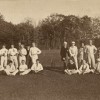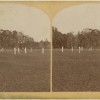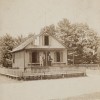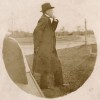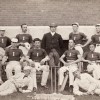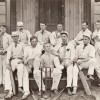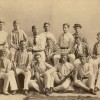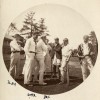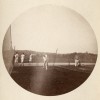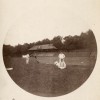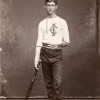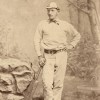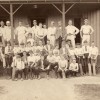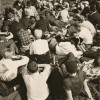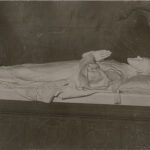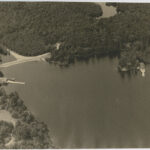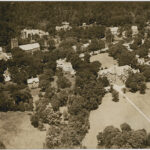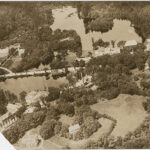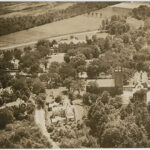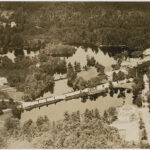In Celebration of Cricket
Introduction:
The beginning of each October brings with it the anticipation of one of the more popular traditions at St. Paul’s School, Cricket Holiday. More than one hundred years after the last formal cricket games were played on the Lower Grounds, this holiday remains a vivid and memorable part of the experience of today’s students.
Cricket was played with great dedication and enthusiasm from the earliest days of St. Paul’s School. The first recorded game was played in 1857, and it remained an essential sport at the School until 1903 when the growing popularity of baseball finally eclipsed cricket. During the height of the sport, in the 1880s and 1890s, the School Cricket Eleven went on tour and played tournaments against professional teams in Boston, Philadelphia, New York, and its most celebrated victory, the tour of Canada in 1889. The game of cricket is embedded in the foundation of the School, and the fact that Cricket Holiday survives even the game itself reflects the sport’s importance in the history of St. Paul’s School.
The announcement of Cricket Holiday is as indirect as it is anticipated. The Rector recites a special prayer, “For Use on Holidays” reserved only for this day. It begins with:
“O, Lord, who hast promised that thy holy city Jerusalem shall be full of boys and girls playing . . .”
It is likely that very few students, past or present, know much more than that of the prayer due to the response that those few words elicit from those in attendance. Samuel Smith Drury, in his letter published in the Autumn 1922 edition of the Alumni Horae, credits Dr. James DeKoven as the author of the prayer. Drury’s letter describes the Cricket Holiday outing on October 13th of that year which included a long walk through the grounds followed by a picnic at the Shattuck boathouse. He says:
“In a way, Cricket Holiday marks the fact that the new year is really begun. That we are beginning it happily and wholesomely together seems to be the case.”
He continues with a section directed specifically to alumni of the School:
“Many of you, perhaps confined to cities, would like to hear the rustle of Autumn leaves beneath your feet, and see the glistening ponds, and even attend a picnic on the shores of that lake of many a rowing contest and memory. But the next best thing will be to know that the good old life here goes freshly on, and that youth as ever hopeth all things.”
In celebration of the sport that gave birth to Cricket Holiday, photographs from the St. Paul’s School archives have been digitized and displayed online. Selected photographs have been gathered into this exhibit to provide an introduction to the history of the sport of cricket at St. Paul’s School as well as a context for the enduring tradition of Cricket Holiday.
Exhibit Quick Links:
(See full exhibit below)
Click on the thumbnails above or the titles below to access the individual catalog pages.
Exhibit Entries:
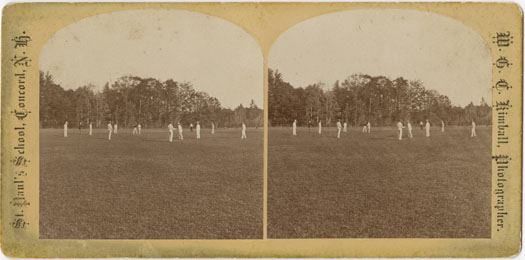
Cricket was initially played on a field located behind the original school and Lower School pond, an area that today is partially occupied by Ohrstrom Library. Players became dissatisfied with this location because the small size of the field meant that the cricket ball was constantly being driven into the pond. They even kept a boat handy at the water’s edge for the purpose of retrieving the ball. Student and cricket player, Richard Henry Dana, Jr., Form of 1870, was instrumental in convincing Henry Coit that a better playing field for cricket could be laid out in the fields of Belknap farm, known as the Red Barn today. In the summer of 1868 these fields were converted into playing fields, including an area specifically for cricket, and was named the Lower Grounds.
This image is number 9 in a series of stereoscopic views produced by Kimball Studios, and features a photograph of cricket being played on the Lower Grounds.
Enlarged detail:
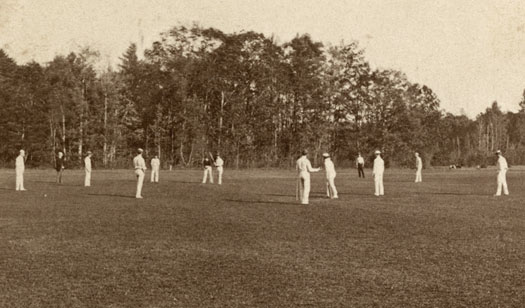
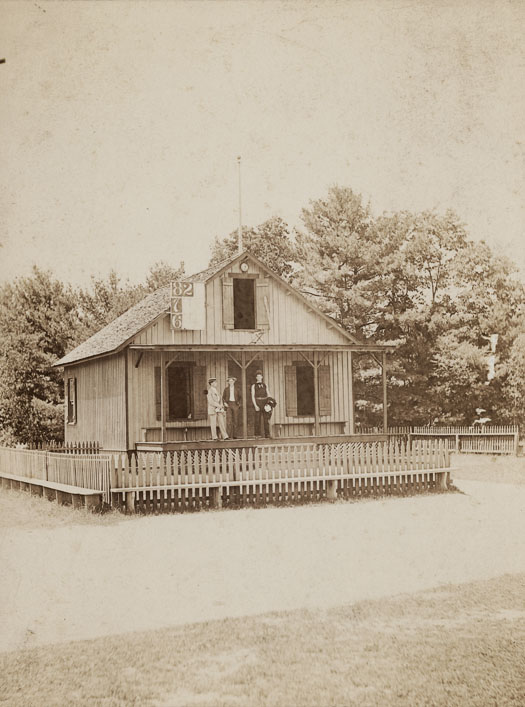
The Cricket House was located in the same general area of Lower Grounds that the Blass Club House is today. Identified on the right in this picture is Langdon Lea, Form of 1892, and on the left is William Russell Richards, Form of 1876.
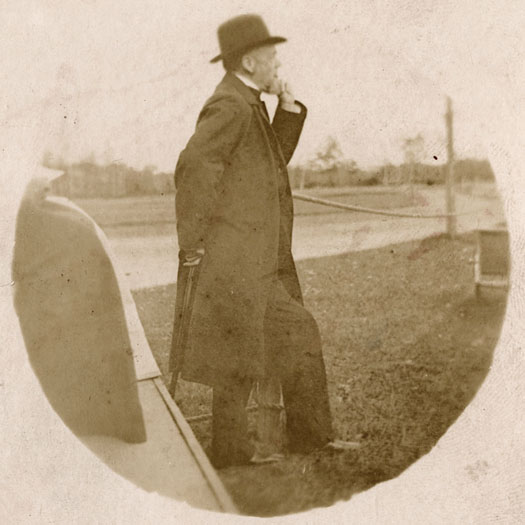
This photograph of the Rev. Dr. Henry Augustus Coit, First Rector of St. Paul’s School (1856-1895), is one of the few candid photographs of him found in the archives collection. This particular photograph was taken by Leland Beekman Garretson, Form of 1898. Judging from the background it appears that Coit is a spectator on the Lower Grounds, and it is likely that he is watching a game of Cricket.
In Arthur Stanwood Pier’s book, St. Paul’s School 1855 – 1934, he describes Henry Coit’s interest in cricket:
Slight as was the interest that Henry Coit took in any match game and indifferent as he was himself to all sports, he looked with favor on cricket. It was a game that gentlemen in Philadelphia played, and it had years of sound English tradition behind it. . . The fact that it had no popular vogue in America was irrelevant; the fact that besides being a healthy form of exercise it was clean and rather picturesque and brought out no vulgar shouting was all important.
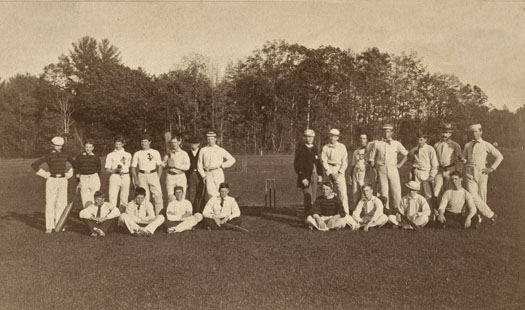
The first recorded cricket match at St. Paul’s School was played on July 4th, 1857. In 1859 organized cricket clubs were formed that later evolved into the Isthmian and Old Hundred Cricket Clubs represented in the photograph above.
This photograph features the Isthmian and Old Hundred Cricket Clubs of 1877 and represents one of the earlier photos of these clubs in the archives collection. This photo has the names of the team members written below the teams.
The Isthmian Cricket Club members listed are:
Thomas Shoenberger Blair, Jr., Form of 1880
William Stanley Emery, Form of 1876
The Rev. Thomas James Drumm, faculty member from 1874-1911
James Lawrence Hamilton, Form of 1878
William Crawford Sheldon, Form of 1878
John Bedford Shober, Form of 1878
Othinel DeForest, Form of 1878
Charles Bigelow Denny, Form of 1880
Charles Mifflin Hammond, Form of 1878
John Blacklock Gadsden, Form of 1878
Robert Patterson Perkins, Form of 1879
The Old Hundred Cricket Club members listed are:
George William Coale, Form of 1878
Frederick Howard Lee, Form of 1878
Daniel Murray Bohlen, Form of 1878
John Triplett Haxall, Form of 1878
Charles Denston Dickey, Form of 1878
Philip Phisick Peace, Form of 1879
James Carter Knox, Form of 1865, faculty member from 1868-1929
Joseph Gilmore Chandler, Form of 1878
Charles Edward Ingersoll, Form of 1879
Richard Alan Montgomery, Form of 1879
Hallett Dennis Wilcox, Form of 1877
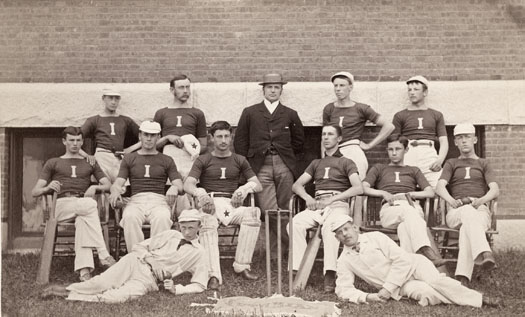
This photograph is of the First Eleven Isthmian cricket team from the fall of 1880. Notations on this and other copies of the same photograph in the archives collection list the team members as:
Back Row (left to right):
Franklin Remington, Form of 1881
The Rev. Edward Melville Parker, Form of 1872 and faculty member from 1879-1906
Dr. James Milnor Coit, Form of 1860 and faculty member from 1877-1906
William Hamilton Foster, Form of 1881
[unknown]
Middle Row (left to right):
[unknown]
Lester Carrington Dole, faculty member from 1878-1918
Thomas Shoenberger Blair, Jr. Form of 1880 and team captain
Julius Tyler Andrews Doolittle, Form of 1880
James Gregory Mumford, Form of 1880
Joseph Howland Coit, Jr., Form of 1881
Front Row (reclining, left to right):
John Lawrence Pool, Form of 1881
The Rev. Thomas James Drumm, faculty member from 1874-1911
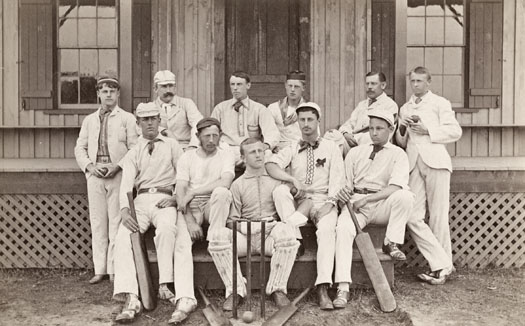
This photograph is of the First Eleven cricket team from the spring of 1881. Notations on other copies of the same photograph in the archives collection list the team members as:
Back Row (standing, left to right):
Nathan Brooke Dolan, Form of 1881
James Carter Knox, Form of 1865, faculty member from 1868-1929
William Hamilton Foster, Form of 1881
James Potter, Form of 1881
The Rev. Thomas James Drumm, faculty member from 1874-1911
John Lawrence Pool, Form of 1881
Front Row (seated, left to right):
Joseph Howland Coit, Jr., Form of 1881
Judson Balis Howard, faculty member from 1894-1936
Perry Manville Buckingham, Form of 1882
Thomas Shoenberger Blair, Jr. Form of 1880 and team captain
James Gregory Mumford, Form of 1880
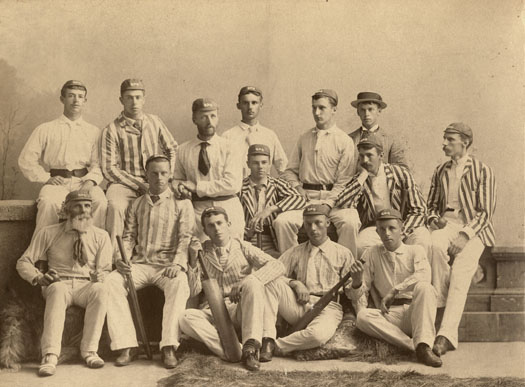
The cricket team of 1889, shown here with cricket professional Samuel Morley on the far left (seated, holding a cricket ball), had a very successful summer tour of Canada. Arthur Stanwood Pier, in his book, St. Paul’s School 1855-1934, described it this way:
In subsequent years the school eleven extended their itinerary, playing in Boston and in Philadelphia as well as in Hoboken and in New York. Their most ambitious expedition, undertaken when the game was enjoying the height of its prestige, was their tour of Canada in the summer of 1889, under the management of Mr. Charles A. Mitchell, a highly respected teacher of Greek. The eleven stayed at the school for a week after the end of the spring term in order to practice. Their professional, Morley, accompanied them on the tour, as did also two boys, not members of the team, who travelled, one in the capacity of special reporter, the other in that of scorer. Malcolm Kenneth Gordon was captain; the masters who played on the eleven were Rev. James P. Conover, Mr. William H. Foster, Mr. Godfrey M. Brinley, and Mr. James S. Hodges. The team arrived in Montreal on June 30, began their first match there July 1, and played every day except Sunday until the 13th. . . Their trip, which cost about $1070, defrayed by subscription, was highly successful, as they won seven out of eight games, being beaten only by Upper Canada College.
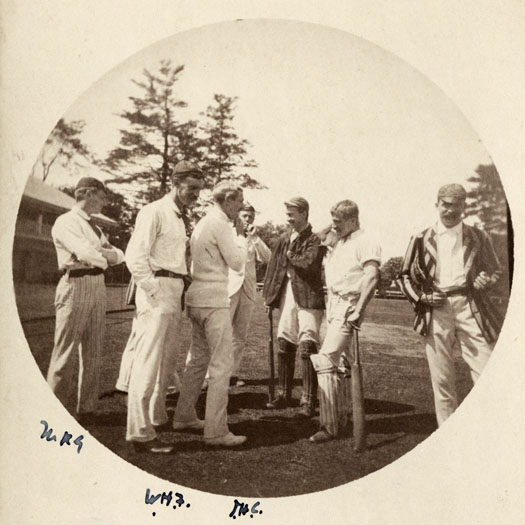
Members of the St. Paul’s School Cricket Eleven at Germantown Cricket Club, Philadelphia, Pennsylvania. Initials under the photograph identify Malcolm Kenneth Gordon (Form of 1887 and faculty member from 1889-1917), William Hamilton Foster (Form of 1881 and faculty member from 1883–1928), and Joseph Howland Coit, Jr. (Form of 1881 and faculty member from 1883-1907).
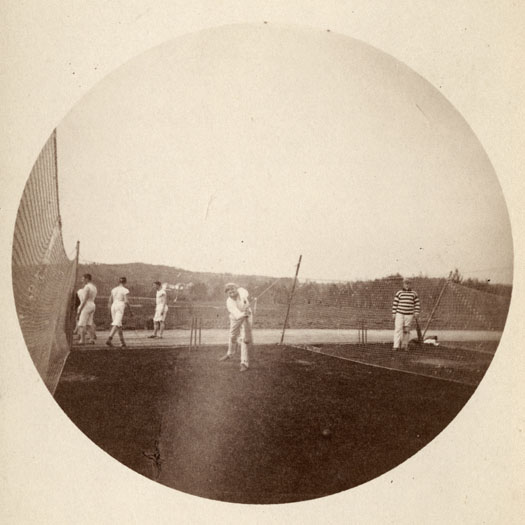
The player shown hitting the ball is identified as Samuel Wheeler Morris, Form of 1890. The other player in the striped shirt is possibly Thomas Bigelow Cowen, Form of 1891.
It is possible that this photograph was taken on school grounds – a similar netted practice area existed at the Lower Grounds near the track.
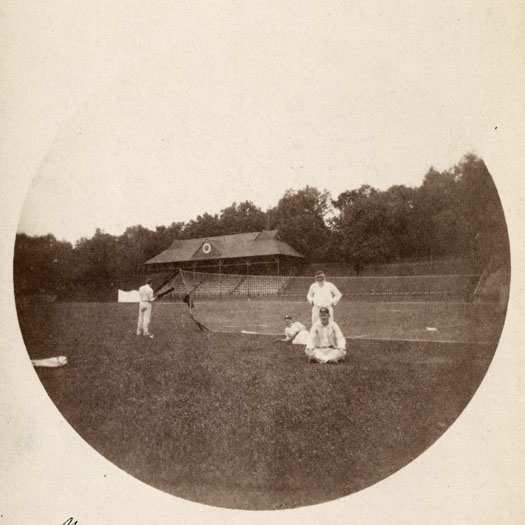
Samuel Morley, cricket coach and professional cricket player, and Joseph Howland Coit, Jr. (Form of 1881 and faculty member from 1883-1907) are identified in this photograph.
Samuel Morley came to St. Paul’s School in 1882 from England, where he had been a professional cricket player of great acclaim throughout the 1870s. It was during his time as coach that cricket was at its most popular at St. Paul’s School, due to his enthusiasm and skill at the sport. He coached cricket until 1902, and after his retirement, without his inspiration, cricket soon fell out of favor.
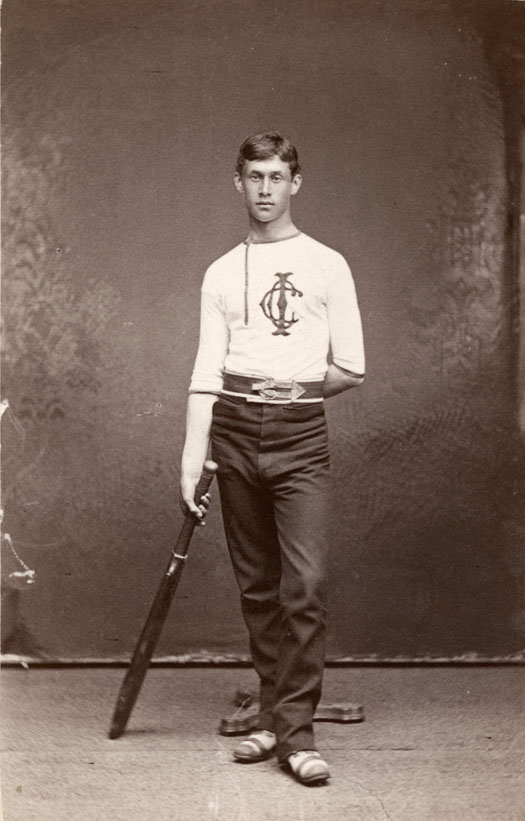
This unidentified cricket player has the Isthmian Cricket Club logo on his shirt.
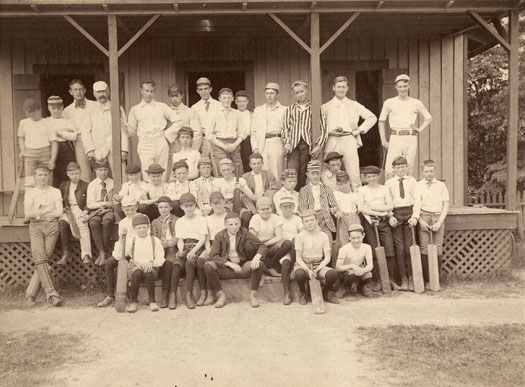
It was traditional that on the annual Choir Holiday a school-wide cricket tournament was played. The connection between choir and cricket is due most assuredly to the fact that the longtime choirmaster, James Carter Knox (Form of 1865 and faculty member from 1868-1929) was an early and devoted player of cricket at St. Paul’s School.
A notation on the back of the photograph dates it to June 10th, 1890. The photographer is listed as Charles A. Kerner – possibly Charles Henry Kerner, Form of 1890. James Carter Knox, with mustache and white cap, can be seen standing on the porch of the Cricket House behind the post on the left.
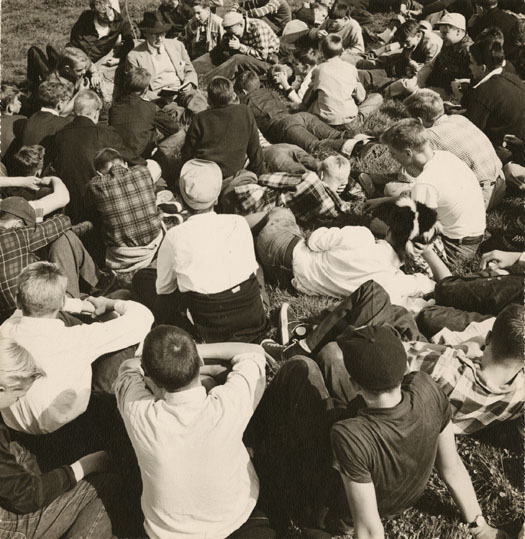
It is uncertain when the first Cricket Holiday was celebrated at St. Paul’s School, but the tradition goes back at least one hundred years. During Samuel Smith Drury’s Rectorship the holiday included a long walk through the grounds for all the new students, followed by a picnic. Similarly, for the current Cricket Holiday celebrations the Rector has invited new members of the St. Paul’s School community, students, faculty and staff, to put on their hiking shoes and follow him on a guided tour through the wooded, more remote areas of the grounds. In general, it is a day, outside the ordinary schedule, set aside for students to enjoy the pleasant fall weather and the beauty of the vast School grounds.
In this photograph Henry Crocker Kittredge, Sixth Rector of St. Paul’s School (1947-1954), is shown reading to the students on Cricket Holiday.
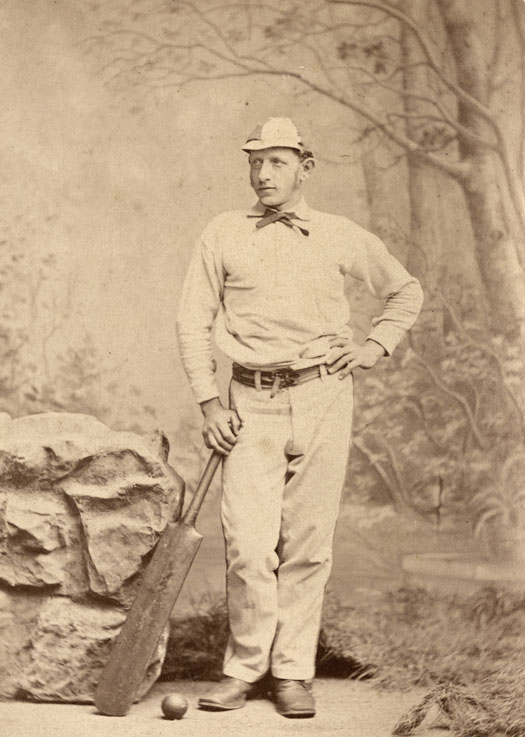
This photograph, dated to about 1880, was the gift of either Decoursey Fales, Form of 1907 or Decoursey Fales, Jr., Form of 1937. Part of the inscription on the back suggests this may be a photograph of the Rev. Charles Adams Morrill, member of the faculty from 1868-1888.

